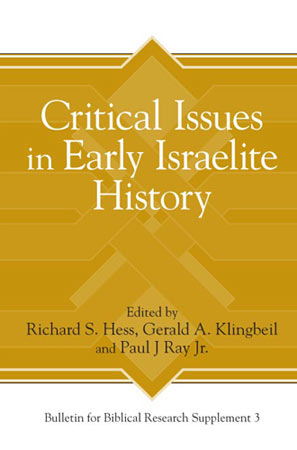
This article was first published in the book: Critical Issues in Early Israelite History. Copyright (c) 2008 Eisenbrauns, Inc. Posted with permission. Available from Eisenbrauns publishers. To purchase this book from Eisenbrauns, click on the cover graphic to the left.
Dedicated to Dr. David Livingston.
Abstract: The sites of Joshua’s Ai, Beth Aven and Bethel, are chronologically and geographically linked by Josh 7:2 and related passages. Joshua’s Ai is commonly thought to be located at et-Tell and Bethel at Beitin. Assuming these two
identifications to be correct, no viable location for Beth Aven has been suggested. A detailed review of the geographical and archaeological data pertaining to et-Tell and Beitin reveals that et-Tell does not meet the biblical requirements for Joshua’s Ai, and Beitin does not meet the biblical and extrabiblical requirements for Bethel. Based on present evidence, the only combination that meets the complex matrix of biblical and extrabiblical requirements for the three sites is to locate Bethel at el-Bira, Beth Aven at Beitin, and Joshua’s Ai at the newly excavated site of Khirbet el-Maqatir.
Open this PDF file to read the rest of this extensive research on Joshua's Ai.
The Search for Joshuas Ai.pdf (1.34 mb)
Search for Joshua's Ai references MS Word.doc (70.00 kb)
Note: Although ABR founder Dr. David Livingston and Dr. Bryant Wood have drawn different conclusions on the location of Joshua's Ai, Dr. Wood has recognized the extremely important contributions made by Dr. Livingston over the past 40 years with respect to this important subject by dedicating this article to him.